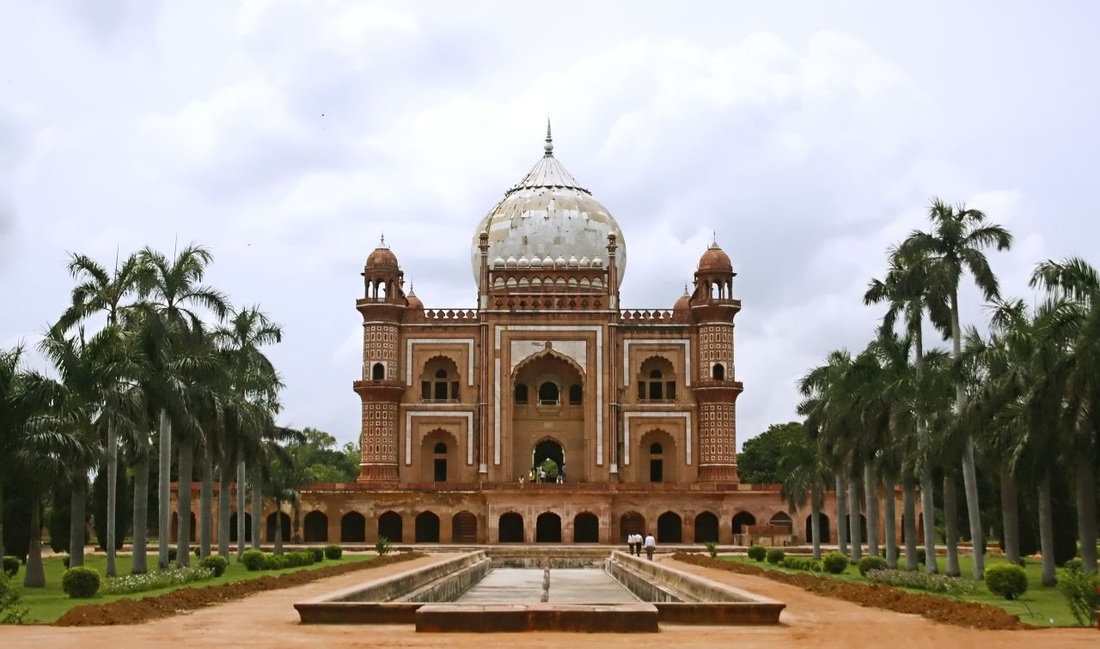Safdar Jung's Tomb
SafdarJung's Tomb
- Built in A.D. 1753 at Delhi as a mausoleum for Safdar Jung, a nephew of the first king of Oudh.
- It is the last Islamic monument of note to be built at Delhi.
- The tomb complex consists of a large ornamental garden designed in the Mughal fashion in the centre of which stands the main structure.
- The central structure consists of an arcaded terrace of 110’ side and 10’ high on which rises a double storeyed edifice of 60’ side covered by a large and almost spherical dome.
- The chief architectural elements visible in Mughal buildings such as large and small arched alcoves, turrets with kiosks and a central dome are also seen in the structure.
- The features have been altered and distributed in a manner deviant from the original archetype, thus producing a different effect which is rather stilted and unsatisfied. When compared with its predecessors, Humayun’s Tomb and the Taj Mahal, the main defect becomes apparent, which is the unpleasing nature of its proportions, the narrow and vertical tendency of the structure due to the lack of correct expansion at the base which causes the absence of the pyramidal mass which is responsible for the sense of rhythm in the previous examples.


